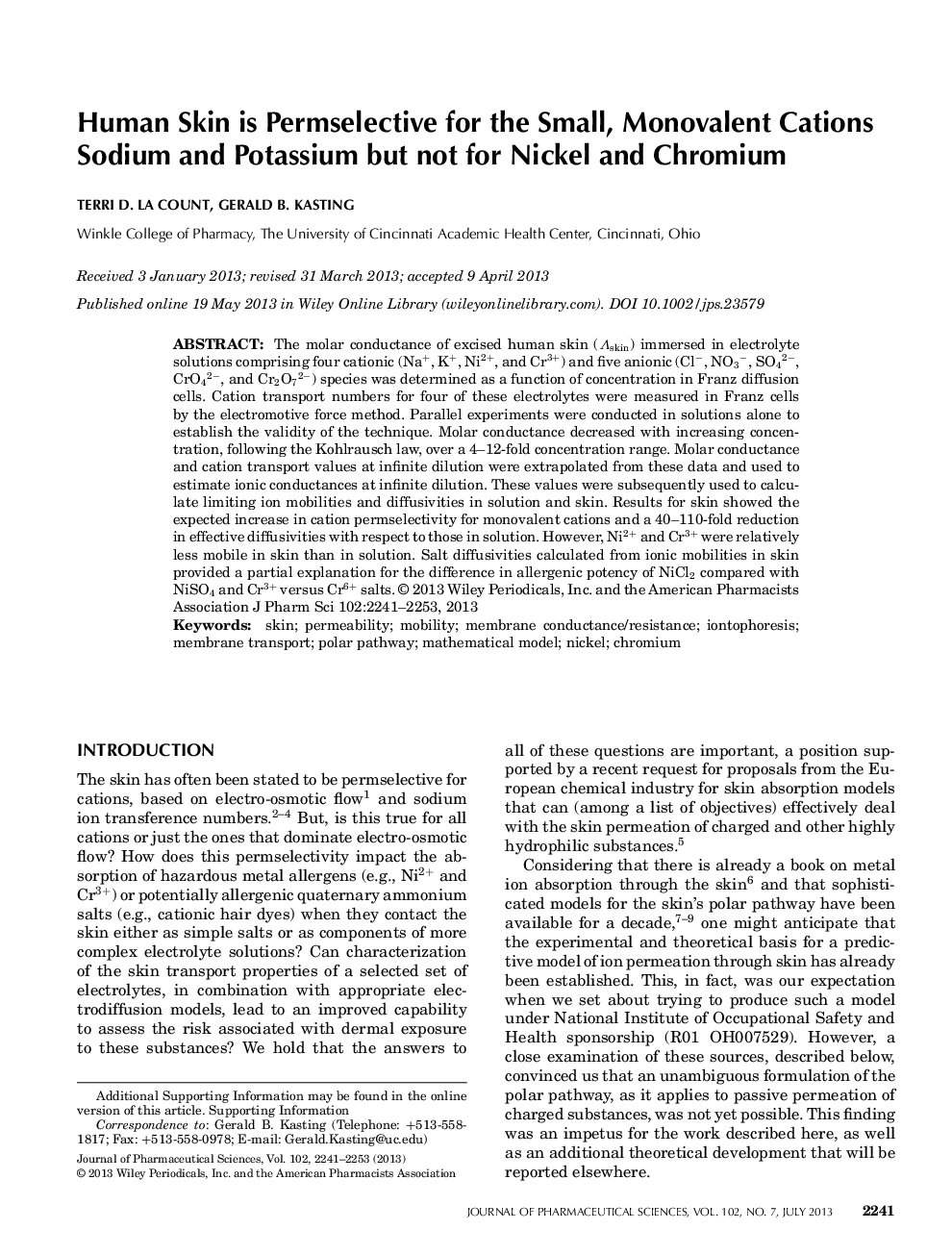| Article ID | Journal | Published Year | Pages | File Type |
|---|---|---|---|---|
| 2484751 | Journal of Pharmaceutical Sciences | 2013 | 13 Pages |
Abstract
The molar conductance of excised human skin (Îskin) immersed in electrolyte solutions comprising four cationic (Na+, K+, Ni2Â +, and Cr3Â +) and five anionic (Clâ, NO3â, SO42Â â, CrO42Â â, and Cr2O72Â â) species was determined as a function of concentration in Franz diffusion cells. Cation transport numbers for four of these electrolytes were measured in Franz cells by the electromotive force method. Parallel experiments were conducted in solutions alone to establish the validity of the technique. Molar conductance decreased with increasing concentration, following the Kohlrausch law, over a 4-12-fold concentration range. Molar conductance and cation transport values at infinite dilution were extrapolated from these data and used to estimate ionic conductances at infinite dilution. These values were subsequently used to calculate limiting ion mobilities and diffusivities in solution and skin. Results for skin showed the expected increase in cation permselectivity for monovalent cations and a 40-110-fold reduction in effective diffusivities with respect to those in solution. However, Ni2Â +Â and Cr3Â +Â were relatively less mobile in skin than in solution. Salt diffusivities calculated from ionic mobilities in skin provided a partial explanation for the difference in allergenic potency of NiCl2compared with NiSO4Â and Cr3Â +Â versus Cr6Â +Â salts.
Related Topics
Health Sciences
Pharmacology, Toxicology and Pharmaceutical Science
Drug Discovery
Authors
Terri D. La Count, Gerald B. Kasting,
